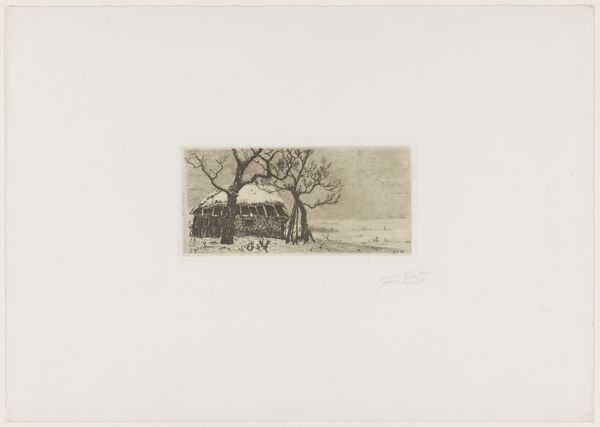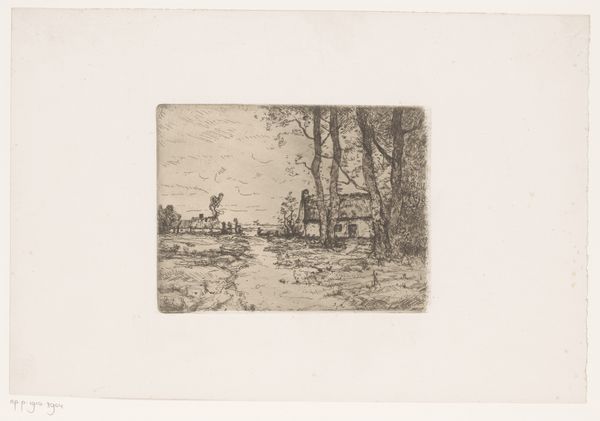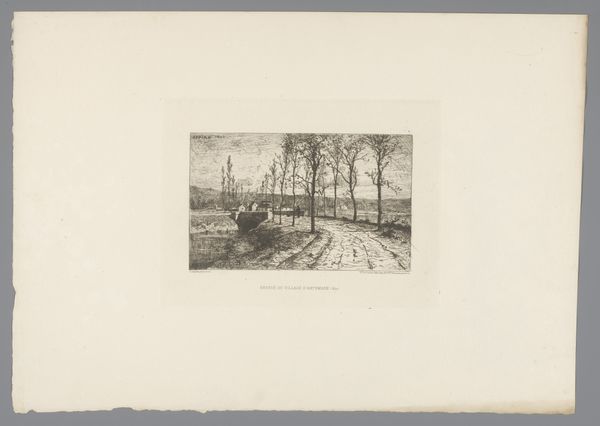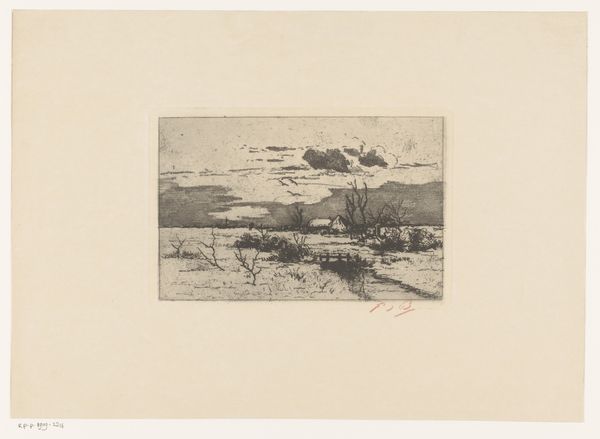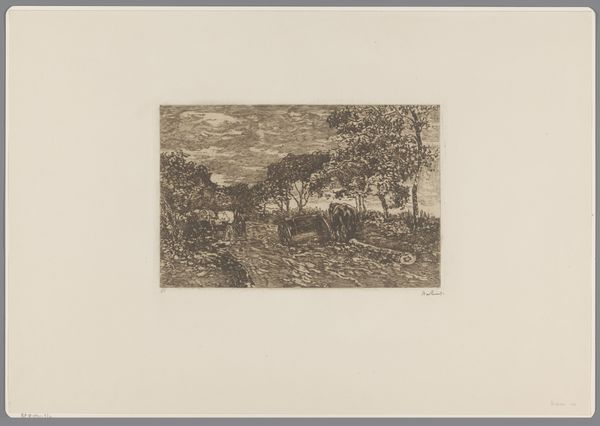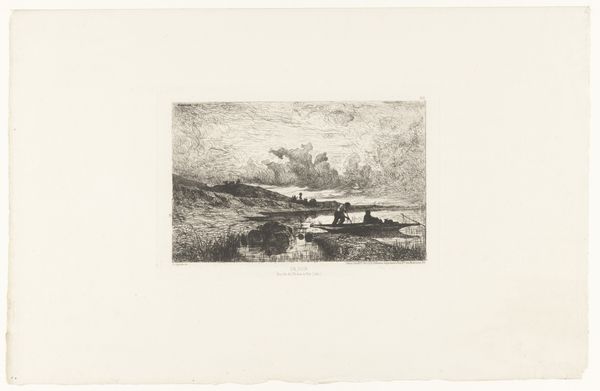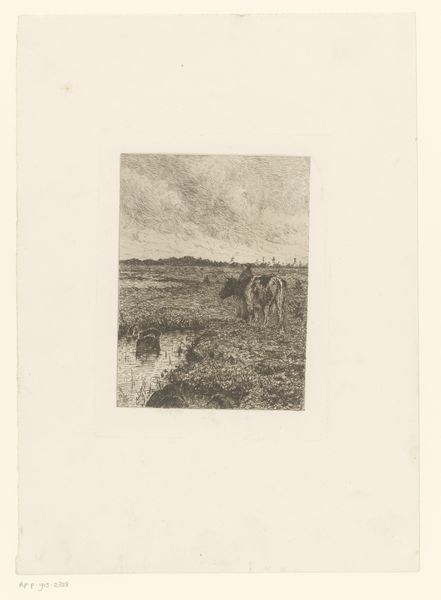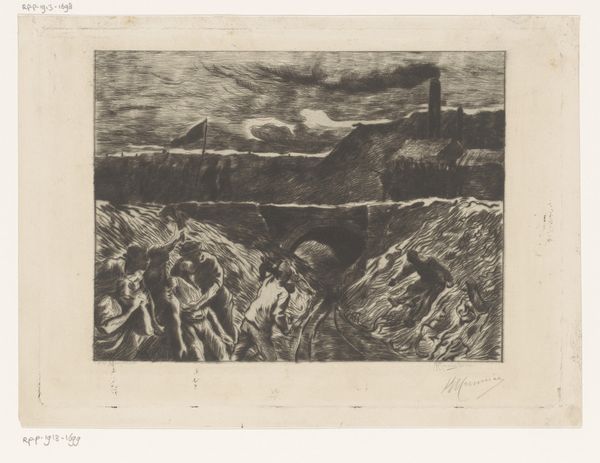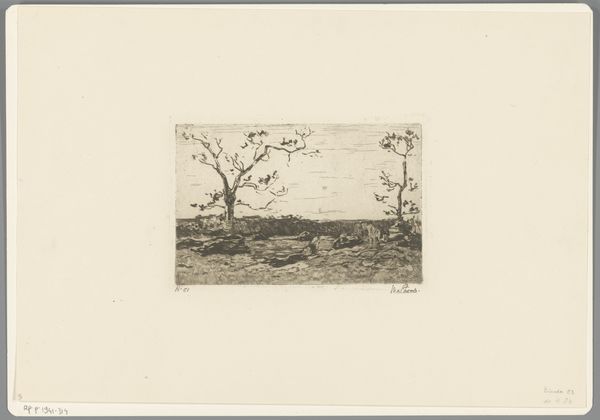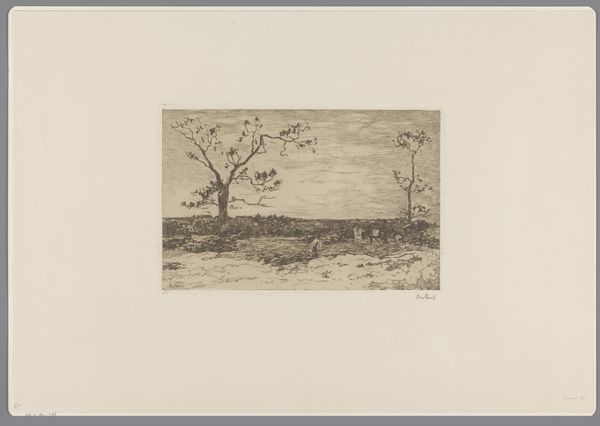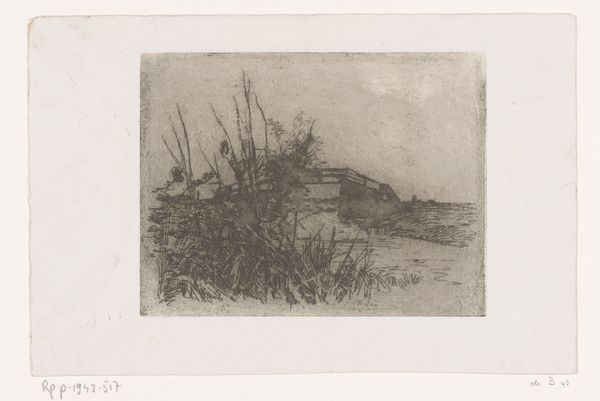
print, etching
# print
#
impressionism
#
etching
#
landscape
#
genre-painting
Dimensions: height 117 mm, width 192 mm
Copyright: Rijks Museum: Open Domain
Curator: We’re looking at “Cows in a Meadow with a Milking Farmer,” an etching by Willem de Zwart, created around 1886 or 1887. Editor: Immediately, I'm struck by the interplay of light and shadow; it almost vibrates. There’s a real tension in the composition too, between foreground and distant horizon. Curator: Yes, De Zwart masterfully uses the etching technique to render the textures and light effects. Observe how the cross-hatching varies in density to describe form and depth. The foreground is a flurry of activity while the background fades into the distance with looser strokes. Editor: I’m drawn to think about the laborious process here. Etching requires patience and skilled craftsmanship. The image becomes almost an archive of that physical engagement – the way the copper plate resists or gives way under pressure. Curator: Exactly. There is a dialectical relationship between the artist and the materiality itself. De Zwart is clearly influenced by Impressionism, prioritizing subjective impression over precise representation. We see this in the almost blurry application to the background detail of the houses, creating an interplay of solids and voids that's incredibly sophisticated. Editor: I wonder, though, about the social conditions reflected. Etchings like these, readily reproducible, spoke to an expanding market and interest in rural life, and brought the farmlands and country directly to burgeoning urban communities. The medium here is really tied to social mobility. Curator: An interesting point! Certainly, the dissemination of imagery changed rapidly at this time. However, the beauty lies intrinsically within its structural form, how the landscape and subject are composed. Its delicate formal language creates an idyllic vision removed from industrial progress. Editor: Perhaps, but that idealized view doesn't erase the conditions that make it visible. What price is that “idyll” built upon, in the real lives of those engaged in these rural labors and routines of the farm? I think that is also important to unpack. Curator: You’ve given me food for thought. There are endless paths for interpreting de Zwart's work! Editor: Indeed, it speaks to us on so many levels. I am keen to return for another look very soon.
Comments
No comments
Be the first to comment and join the conversation on the ultimate creative platform.

